Abstract
Central motor pathways were investigated in three patients with congenital mirror movements using magnetic motor cortex stimulation. Response thresholds, amplitudes and latencies were normal. The projection of the corticomotoneuronal pathways was assessed by placing the coil over the vertex and comparing the size of responses in the first dorsal interosseous (FDI) muscles evoked by anticlockwise and clockwise [corrected] coil currents. In normal subjects, right FDI responses are larger with anticlockwise currents than with clockwise [corrected] currents at the same stimulation strength and vice versa. In two out of three patients with congenital mirror movements, this sensitivity of response amplitude to coil current direction was reversed. The third patient with congenital mirror movements and a fourth patient with acquired mirror movements had responses which were normally sensitive to current direction. These findings support the hypothesis that some cases of congenital mirror movements may be due to abnormal projection of corticomotoneuronal pathways.
Full text
PDF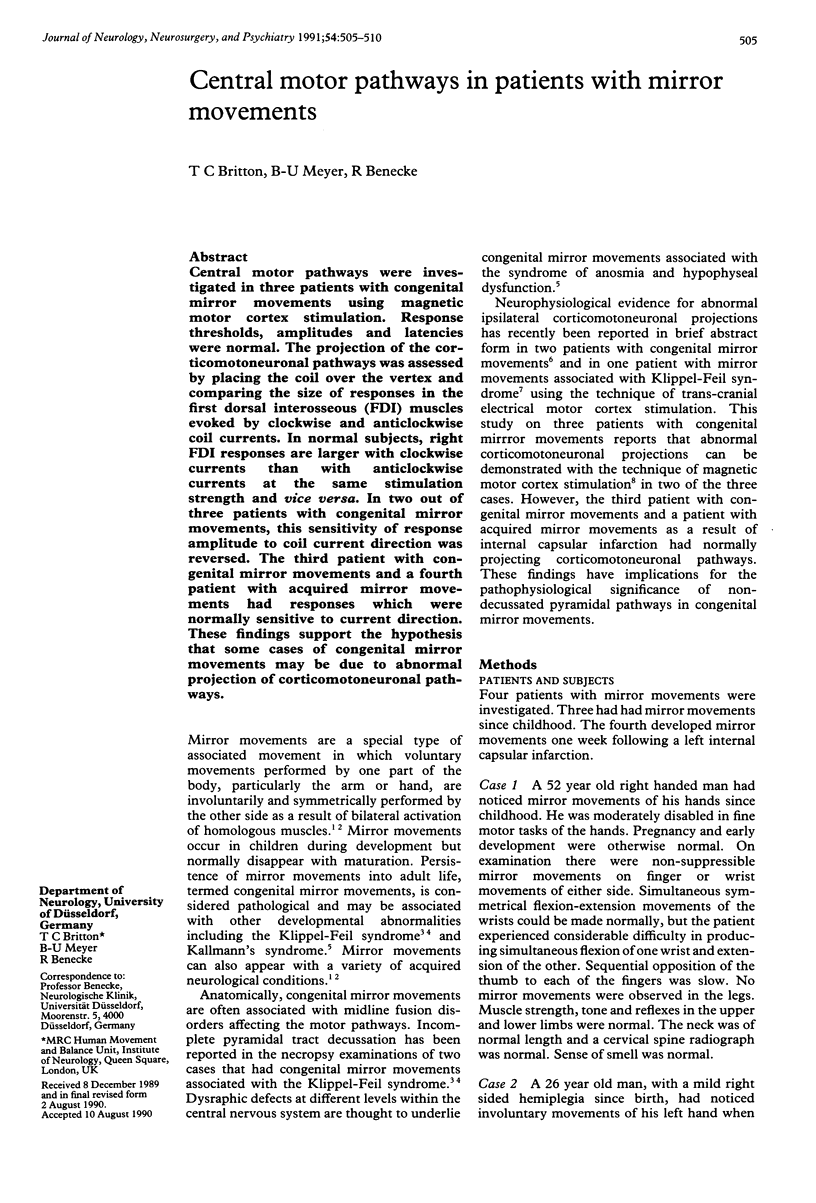
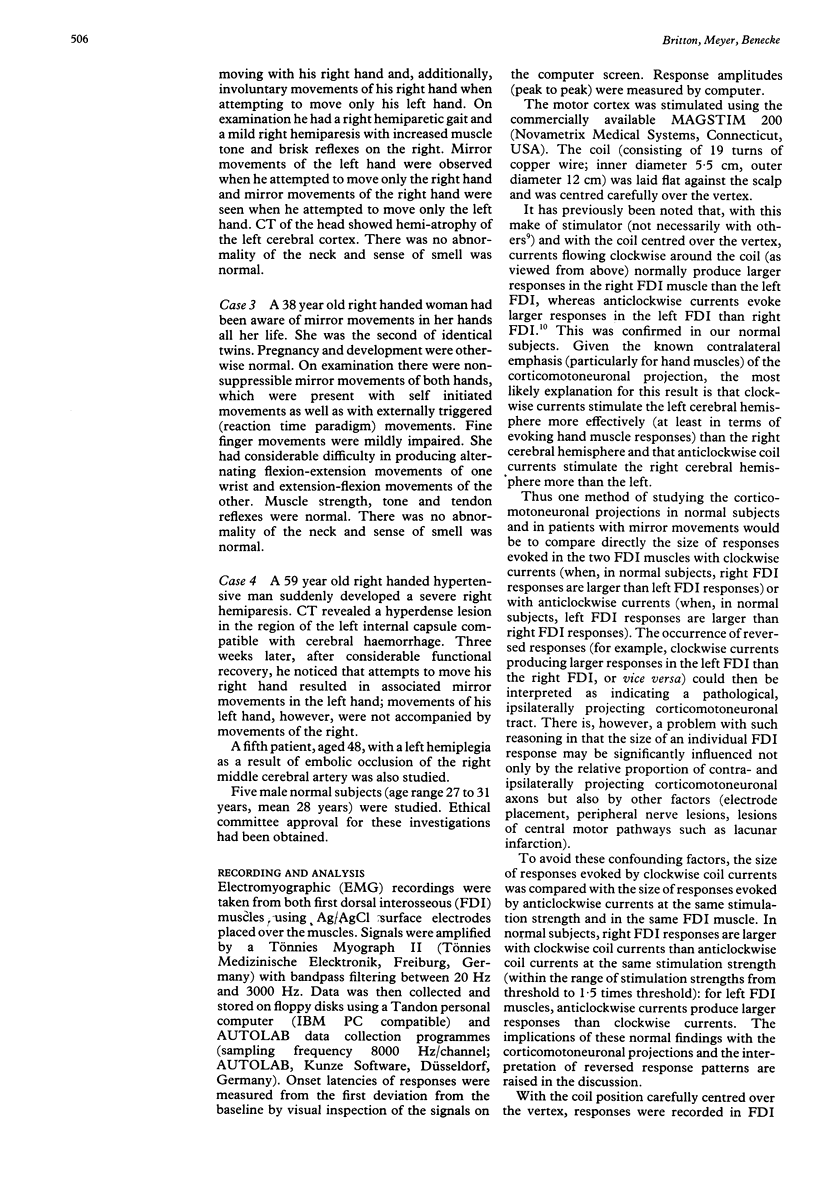
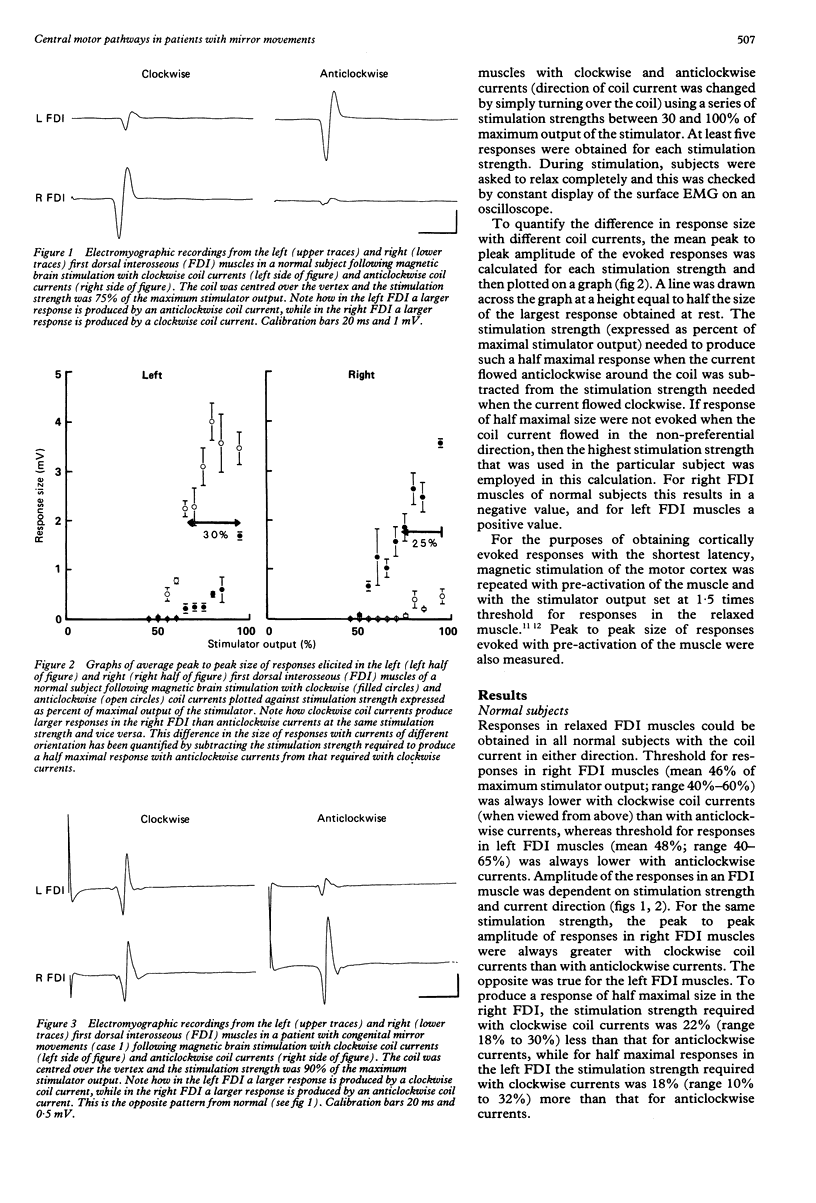
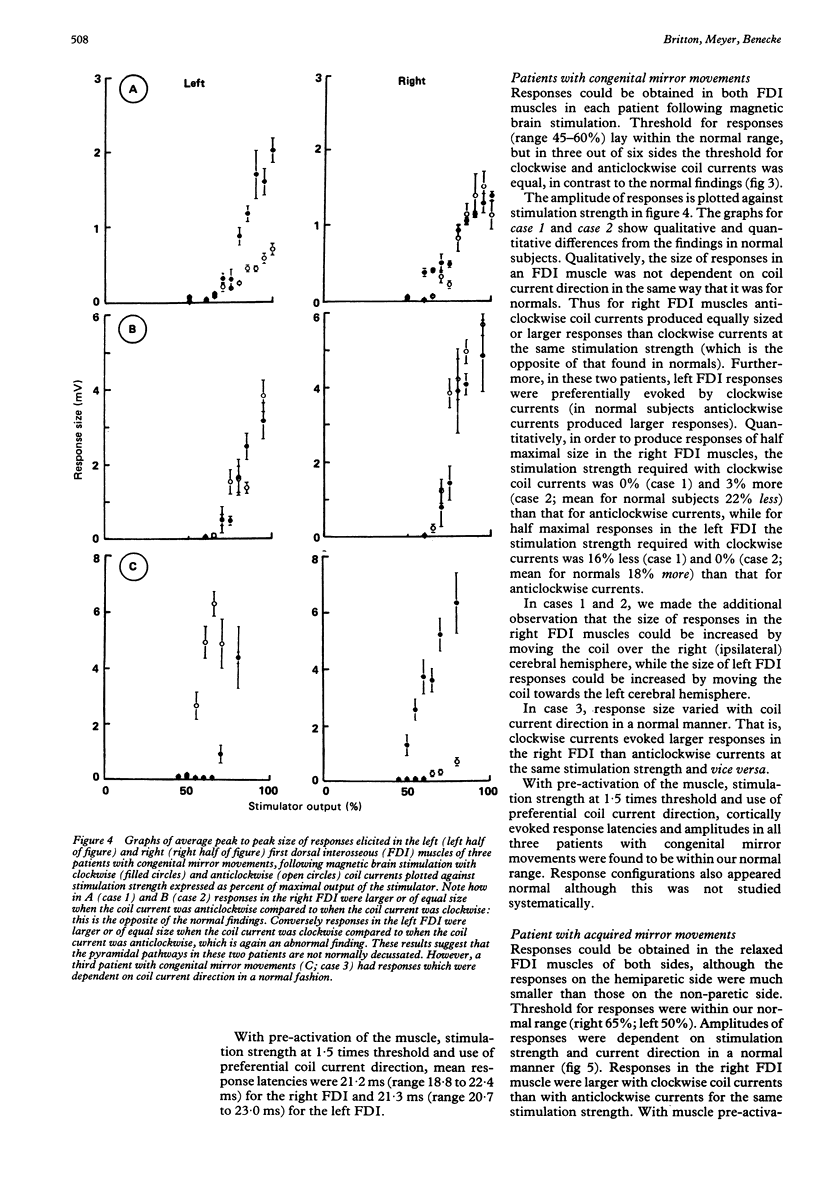
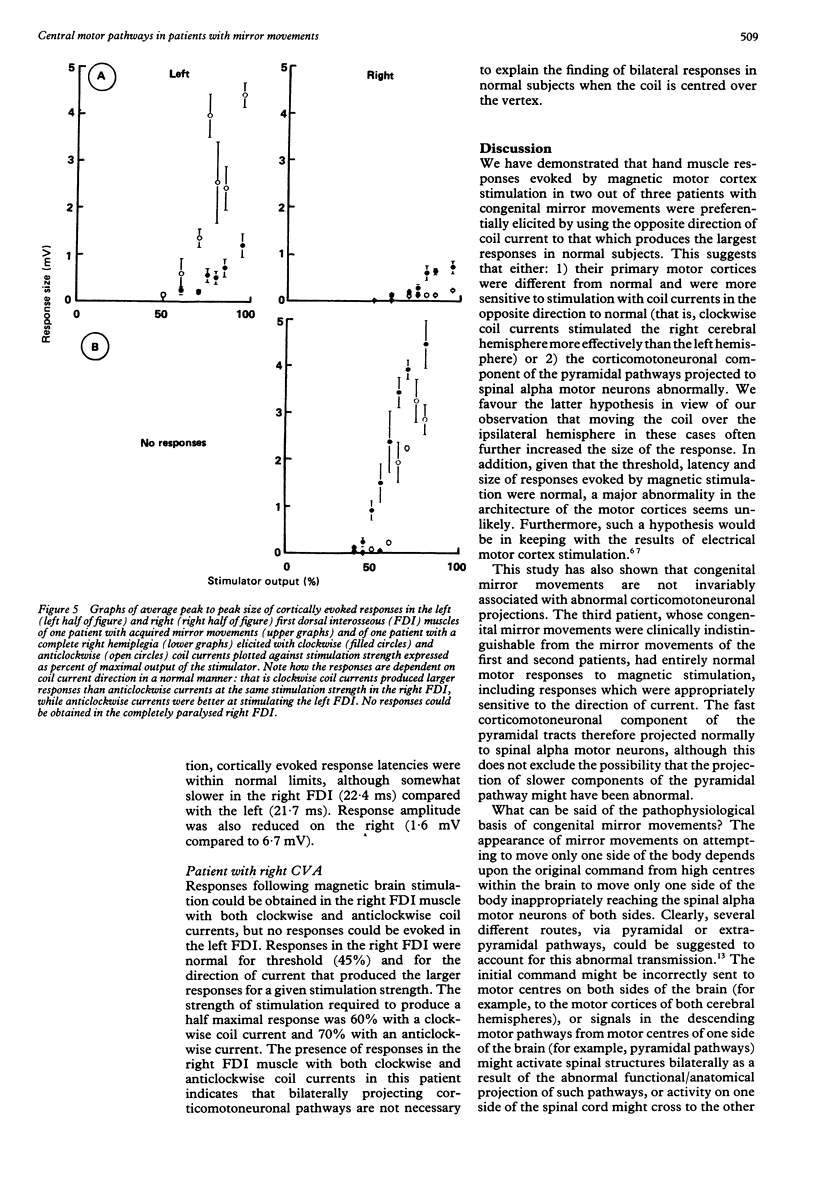
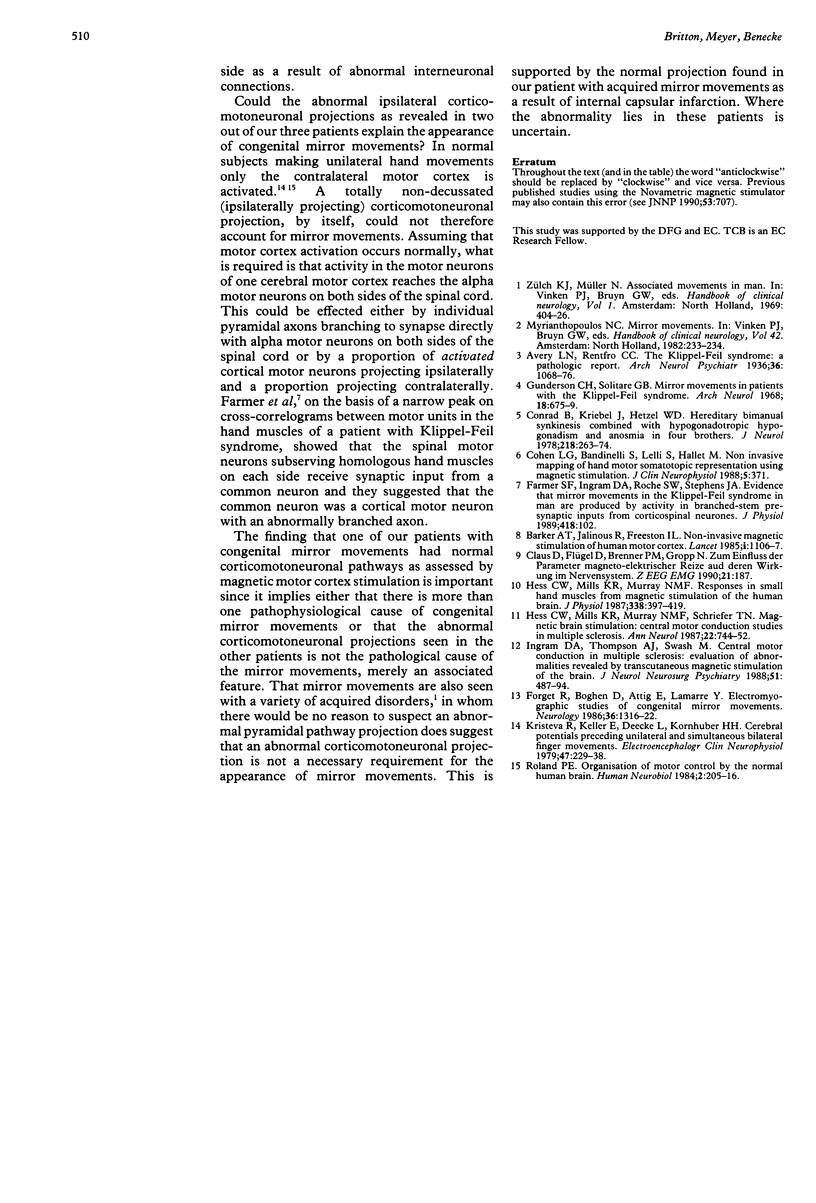
Selected References
These references are in PubMed. This may not be the complete list of references from this article.
- Conrad B., Kriebel J., Hetzel W. D. Hereditary bimanual synkinesis combined with hypogonadotropic hypogonadism and anosmia in four brothers. J Neurol. 1978 Aug 25;218(4):263–274. doi: 10.1007/BF00312882. [DOI] [PubMed] [Google Scholar]
- Forget R., Boghen D., Attig E., Lamarre Y. Electromyographic studies of congenital mirror movements. Neurology. 1986 Oct;36(10):1316–1322. doi: 10.1212/wnl.36.10.1316. [DOI] [PubMed] [Google Scholar]
- Gunderson C. H., Solitare G. B. Mirror movements in patients with the Klippel-Feil syndrome. Neuropathologic observations. Arch Neurol. 1968 Jun;18(6):675–679. doi: 10.1001/archneur.1968.00470360097009. [DOI] [PubMed] [Google Scholar]
- Hess C. W., Mills K. R., Murray N. M. Responses in small hand muscles from magnetic stimulation of the human brain. J Physiol. 1987 Jul;388:397–419. doi: 10.1113/jphysiol.1987.sp016621. [DOI] [PMC free article] [PubMed] [Google Scholar]
- Hess C. W., Mills K. R., Murray N. M., Schriefer T. N. Magnetic brain stimulation: central motor conduction studies in multiple sclerosis. Ann Neurol. 1987 Dec;22(6):744–752. doi: 10.1002/ana.410220611. [DOI] [PubMed] [Google Scholar]
- Ingram D. A., Thompson A. J., Swash M. Central motor conduction in multiple sclerosis: evaluation of abnormalities revealed by transcutaneous magnetic stimulation of the brain. J Neurol Neurosurg Psychiatry. 1988 Apr;51(4):487–494. doi: 10.1136/jnnp.51.4.487. [DOI] [PMC free article] [PubMed] [Google Scholar]
- Kristeva R., Keller E., Deecke L., Kornhuber H. H. Cerebral potentials preceding unilateral and simultaneous bilateral finger movements. Electroencephalogr Clin Neurophysiol. 1979 Aug;47(2):229–238. doi: 10.1016/0013-4694(79)90223-2. [DOI] [PubMed] [Google Scholar]
- Roland P. E. Organization of motor control by the normal human brain. Hum Neurobiol. 1984;2(4):205–216. [PubMed] [Google Scholar]
- Rønne T. Measles virus infection without rash in childhood is related to disease in adult life. Lancet. 1985 Jan 5;1(8419):1–5. doi: 10.1016/s0140-6736(85)90961-4. [DOI] [PubMed] [Google Scholar]


